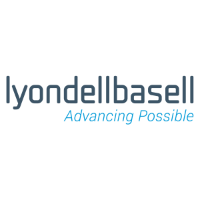Overall, LyondellBasell demonstrates a solid business model with strong operational metrics and strategic initiatives in place. However, they face significant market challenges that could impact future performance. The growth of their CLCS segment presents a positive outlook for the future, but structural industry issues remain a concern.
Analysis Date: January 31, 2025
Last Updated: March 12, 2025
Trailing Twelve Months (TTM) values provide a view of the company's performance over the last year.
Graham Value Metrics
Benjamin Graham's value investing approach focuses on finding stocks with a significant margin of safety between their intrinsic value and market price.
Intrinsic Value
Estimated fair value based on Graham's formula
$161.94
Current Market Price: $57.70
IV/P Ratio: 2.81x (>1.0 indicates undervalued)
Margin of Safety
Gap between intrinsic value and market price
64.0%
Graham recommended a minimum of 20-30% margin of safety
Higher values indicate a greater potential discount to fair value
ROE: 10.394251606280653
ROA: -1.6729144519666537
Gross Profit Margin: 11.092944906856916
Net Profit Margin: 3.3863456202933016
Trailing Twelve Months (TTM) values provide a view of the company's performance over the last year.
Strong Return on Equity
A return on equity of 10.39% shows that the company is efficiently generating profits from its equity, which is a positive indicator of management effectiveness.
Decent Operating Profit Margin
4.29
Operating Profit Margin
The operating profit margin of 4.29% suggests that LYB is capable of managing its operations effectively, allowing it to retain a portion of revenue as profit.
Low Net Profit Margin
The net profit margin of 3.39% indicates that the company is only able to convert a small portion of its revenue into actual profit, which could raise concerns about overall profitability.
About Profitability Metrics
Profitability metrics measure a company's ability to generate earnings relative to its revenue, operating costs, and other relevant metrics. Higher values generally indicate better performance.
Return on Equity (ROE)
Measures how efficiently a company uses its equity to generate profits
10.39%
10%
15%
Higher values indicate better returns for shareholders
TTM (as of 2025-04-16)
Return on Assets (ROA)
Measures how efficiently a company uses its assets to generate profits
-1.67%
3%
7%
Higher values indicate better asset utilization
TTM (as of 2025-04-16)
Gross Profit Margin
Percentage of revenue retained after accounting for cost of goods sold
11.09%
20%
40%
Higher values indicate better efficiency in production
TTM (as of 2025-04-16)
Net Profit Margin
Percentage of revenue retained after accounting for all expenses
3.39%
8%
15%
Higher values indicate better overall profitability
TTM (as of 2025-04-16)
Strong Current Ratio
A current ratio of 1.83 indicates that LYB has more current assets than current liabilities, suggesting good liquidity and ability to cover short-term obligations.
Interest Coverage Ratio
3.6
Interest Coverage Ratio
With an interest coverage ratio of 3.60, LYB demonstrates a strong ability to meet its interest obligations, indicating a healthy financial position.
Elevated Debt Levels
1.04
Debt-to-Equity Ratio
The debt-to-equity ratio of 1.04 suggests that LYB is utilizing a significant amount of debt to finance its operations, which could pose a risk if earnings decline.
Lower Cash Ratio
A cash ratio of 0.50 indicates that the company may not have enough cash to cover all current liabilities, which could create liquidity concerns in adverse situations.
About Financial Health Metrics
Financial health metrics assess a company's ability to meet its financial obligations and its overall financial stability.
Debt to Equity Ratio
Total debt divided by total equity
1.03x
1.0x
2.0x
Lower values indicate less financial leverage and risk
Less than 1.0 is conservative, 1.0-2.0 is moderate, >2.0 indicates high risk
Q4 2024
Current Ratio
Current assets divided by current liabilities
1.83x
1.0x
2.0x
Higher values indicate better short-term liquidity
Less than 1.0 is concerning, 1.0-2.0 is adequate, greater than 2.0 is good
Q4 2024


